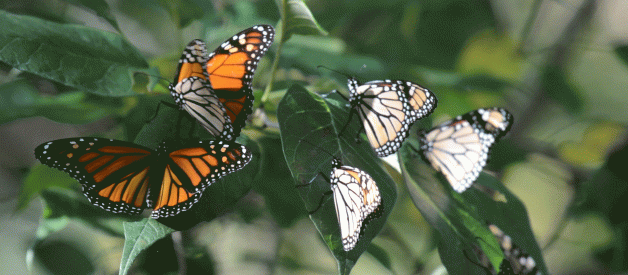As Told By 5 GIFs
Right now, the eastern population of monarch butterflies is migrating up to 3,000 miles to Mexico to spend the winter. As they travel, they need places to stop, rest, and feed on nectar from flowering plants as fuel for their long journey south. In the spring, they will travel north from Mexico, through the U.S. to Canada.

How does the U.S. Fish and Wildlife Service (Service) help monarchs on their epic journey? Enter, the National Wildlife Refuge System. The National Wildlife Refuge System is the largest and most diverse network of lands and waters. Think lots of wildlife, clean water, clear air, gorgeous landscapes, and world-class recreation.
Within the National Wildlife Refuge System are Wetland Management Districts, little known but very important components of the system.
Within the Districts, small parcels of land called Waterfowl Production Areas are purchased and managed by the Service to provide nesting habitat for waterfowl. But, that?s not all they do. The Waterfowl Production Areas provide vital habitat for monarch butterflies and other pollinators. Their diversity of native grasses and flowers, along with milkweed, provide the food and shelter migrating monarch butterflies need.
Milkweed is the host plant for monarch butterflies and the only source of food for monarch caterpillars. Unfortunately, monarch populations are in decline because milkweed is disappearing from the American landscape due to habitat loss, pesticide use, development, and shifts in climate patterns. The Districts are stepping up and doing their part to help this iconic insect.
Each fall, the Madison Wetland Management District and Lake Andes Wetland Management District in South Dakota collect and process milkweed seeds. There are more than 100 different milkweed species native to North America, but Madison and Lakes Andes collect common milkweed (Asclepias syriaca).
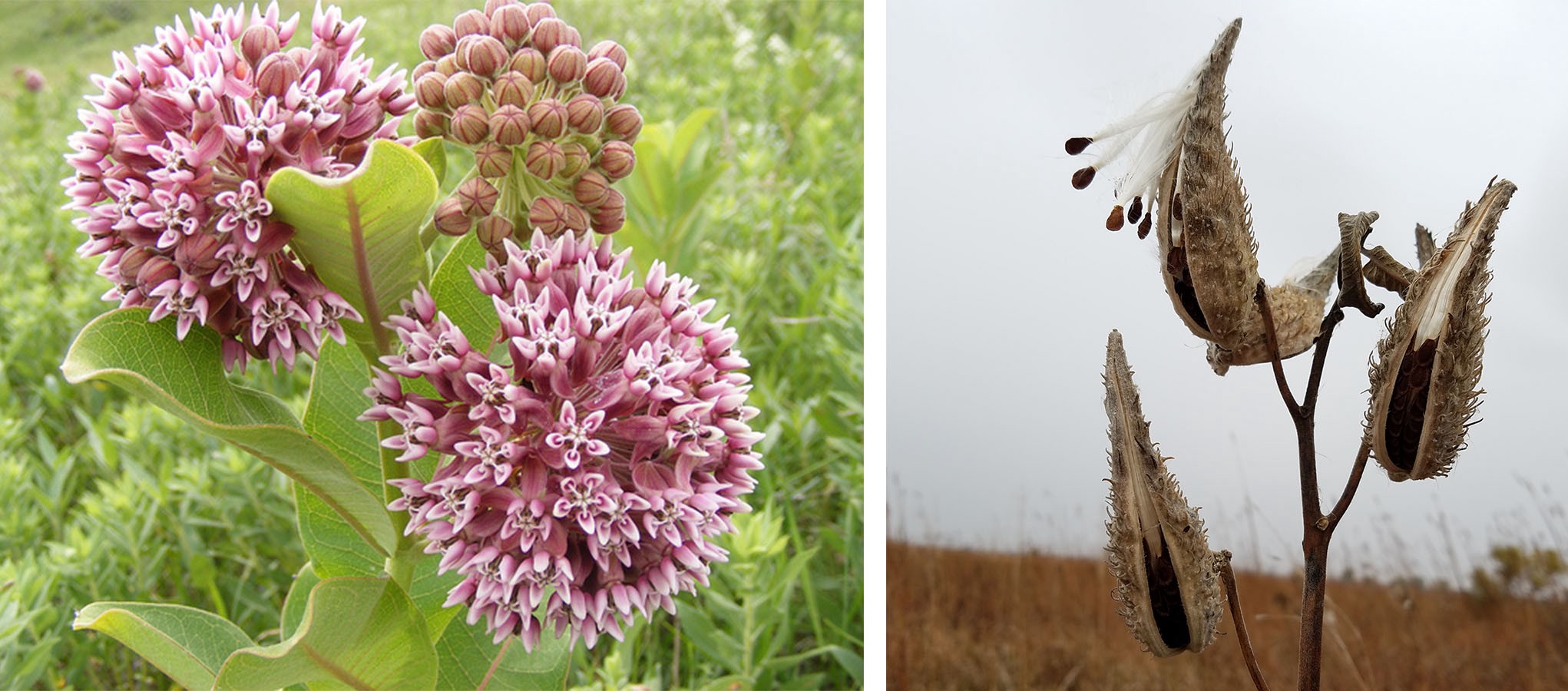 Common milkweed (Asclepias syriaca) in bloom in the spring (left) and common milkweed pods in the fall (right), ready for harvest. Photo (left): Laura Hubers / USFWS (right) Kate Miyamoto /USFWS
Common milkweed (Asclepias syriaca) in bloom in the spring (left) and common milkweed pods in the fall (right), ready for harvest. Photo (left): Laura Hubers / USFWS (right) Kate Miyamoto /USFWS
Go behind the scenes to see what it takes to collect and process milkweed seed at Madison Wetland Management District in South Dakota.
Step 1: Gather the milkweed pods
Wearing gloves, they gather the browning milkweed pods. If you squeeze the pod and it pops open, it is ready to pick!

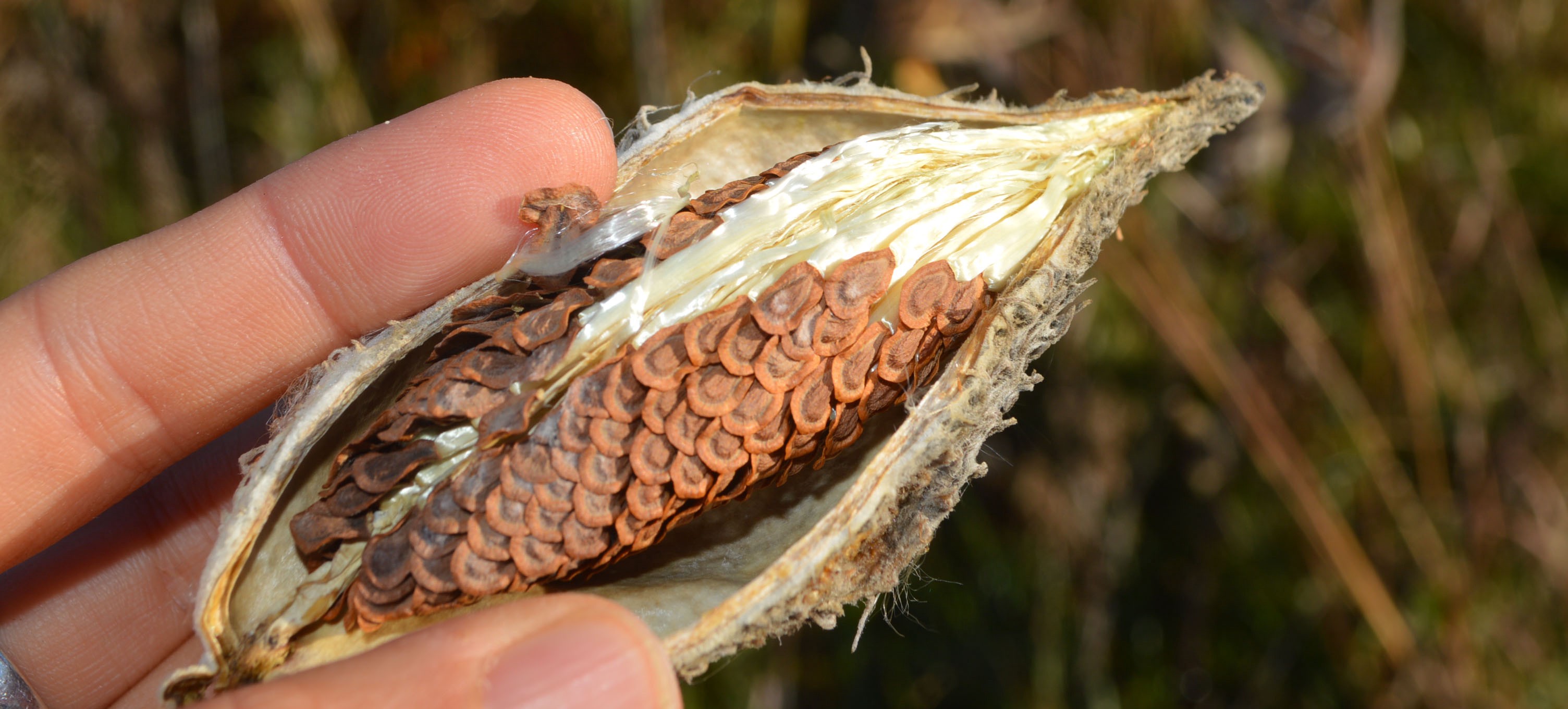 Milkweed pod, ready for harvest. Photo: Kate Miyamoto / USFWS
Milkweed pod, ready for harvest. Photo: Kate Miyamoto / USFWS
Step 2: Dry the milkweed pods
They load the milkweed pods into large, custom-built wooden boxes with circulating air to ensure thorough drying.
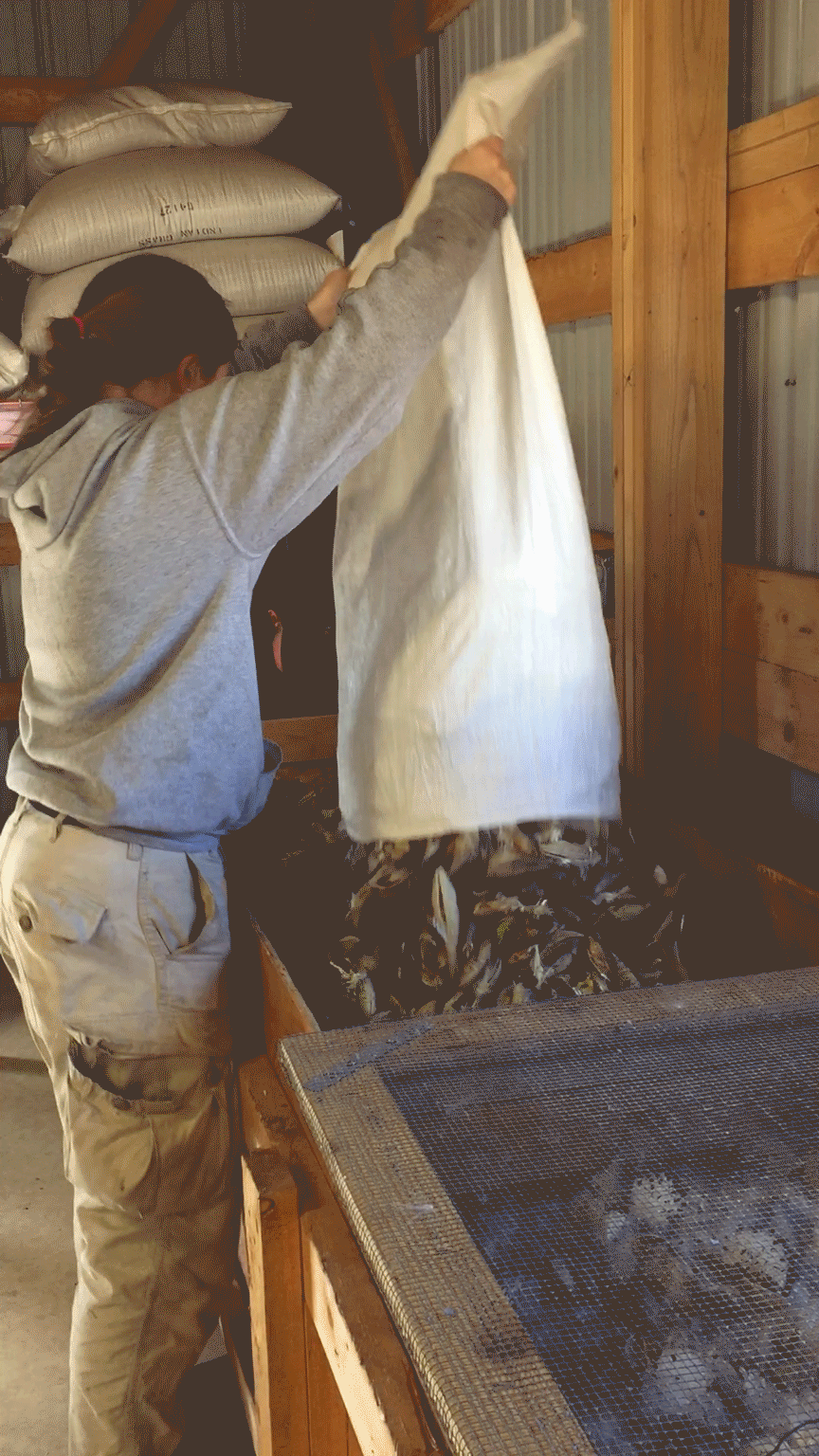
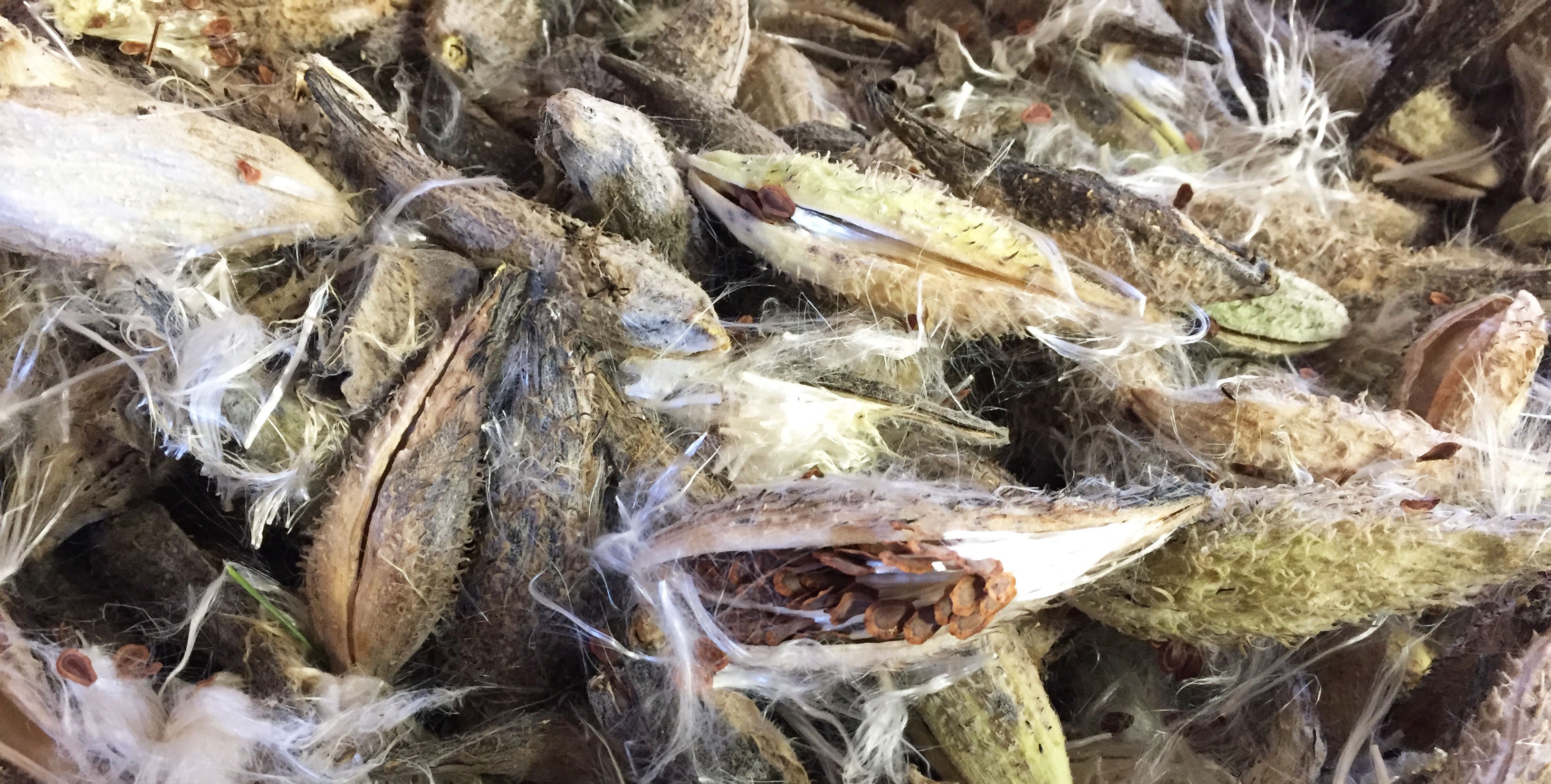 Hundreds of drying milkweed pods. Photo: Kate Miyamoto / USFWS
Hundreds of drying milkweed pods. Photo: Kate Miyamoto / USFWS
Step 3: Separate the milkweed seeds from their pods
After thorough drying, they load the milkweed into a hammermill that crushes the pod and separates it from the hundreds of seeds it contains inside.
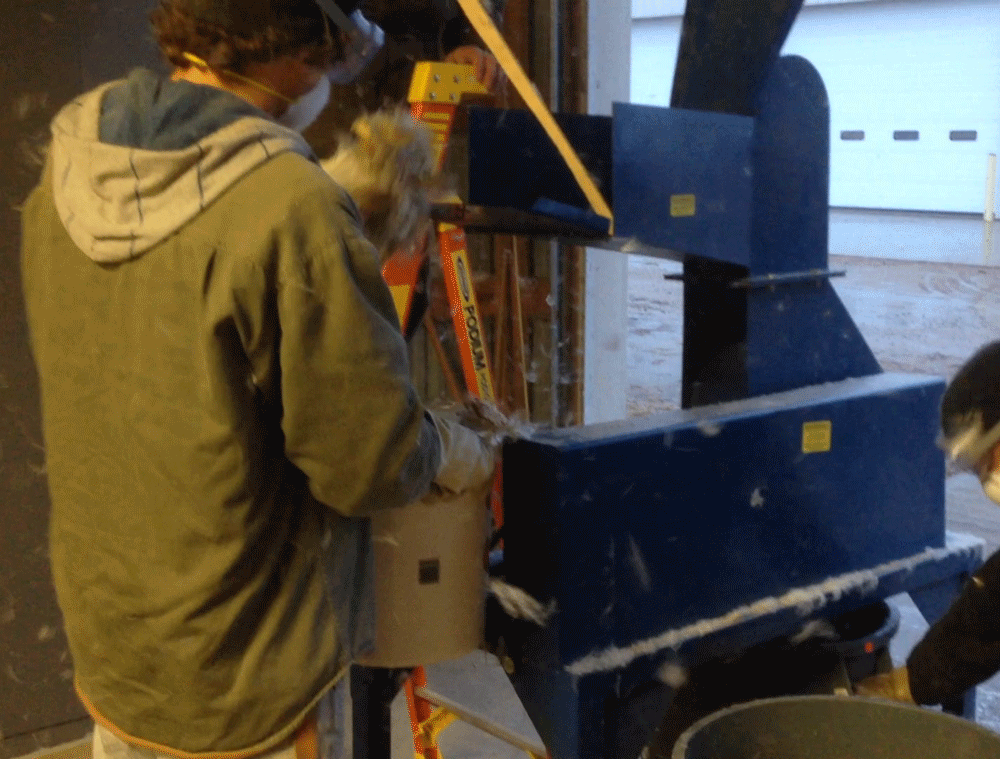
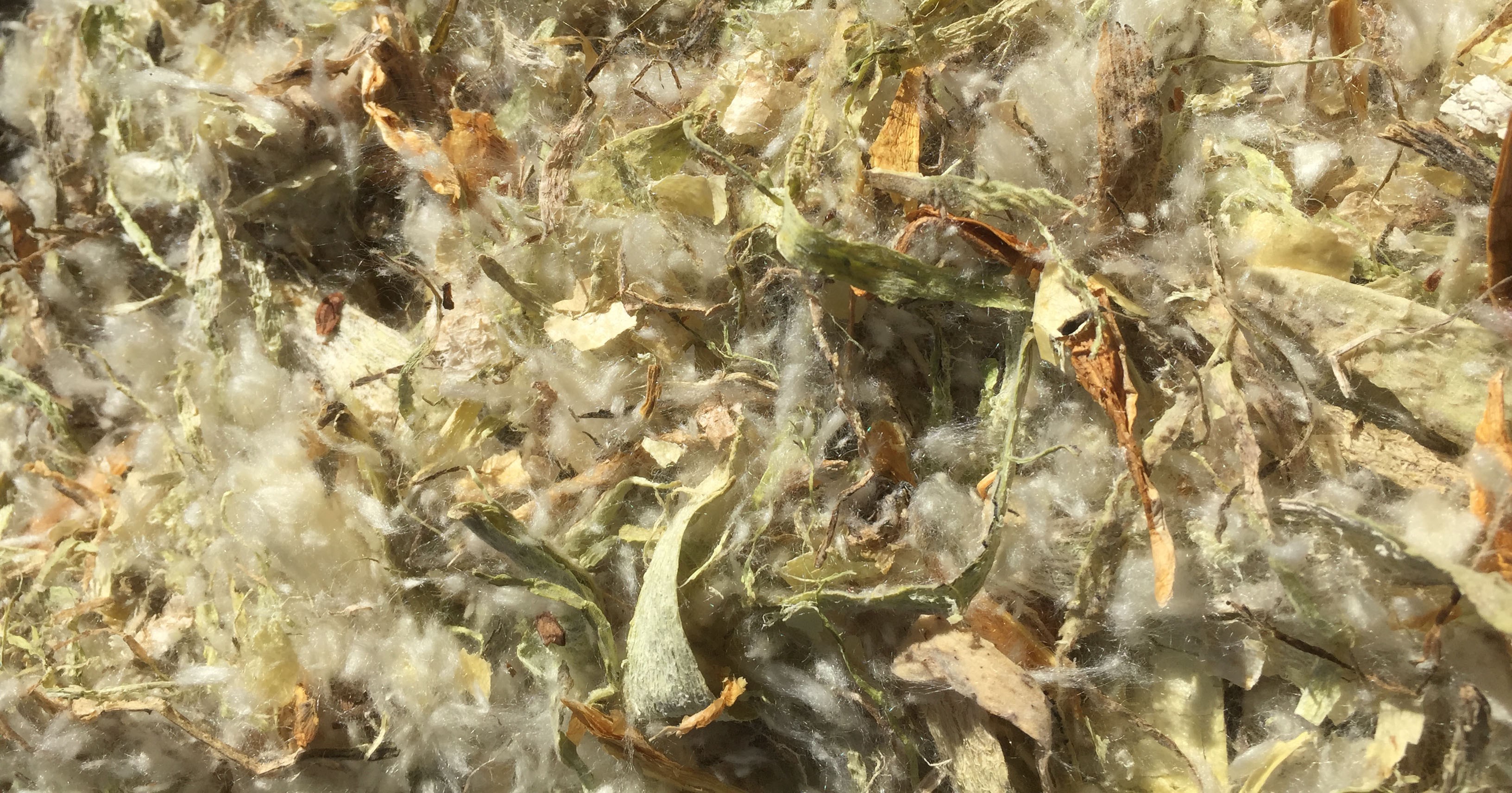 Crushed milkweed pods
Crushed milkweed pods
Step 4: Separate the seeds from the white fluff
They use a grain tumbler (a.k.a. white fluff separator) to separate the seeds from the milkweed silk ? the white feathery fluff inside the milkweed pod to which the seeds are attached.
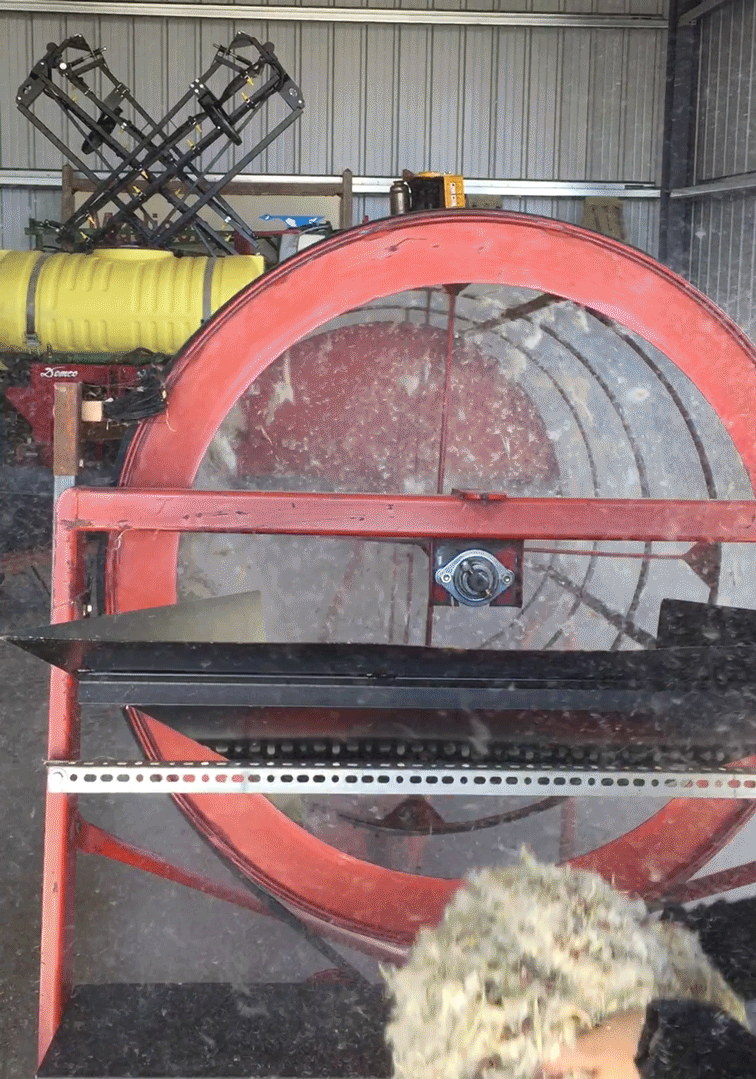
 View inside the grain tumbler. Milkweed white fluff and pods get blown into a bucket. Photo: Savanah Allard / USFWS
View inside the grain tumbler. Milkweed white fluff and pods get blown into a bucket. Photo: Savanah Allard / USFWS
Step 5: Sweep up the seeds and you have milkweed ready to be planted and shared
The seeds fall out through the small holes in the grain tumbler and the white fluff gets blown off and out!
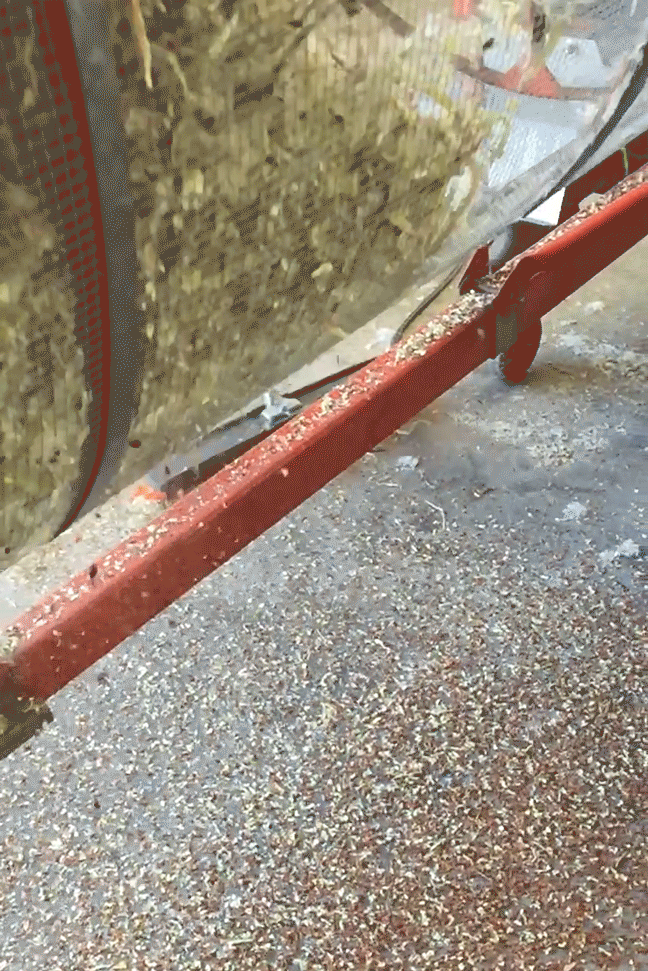
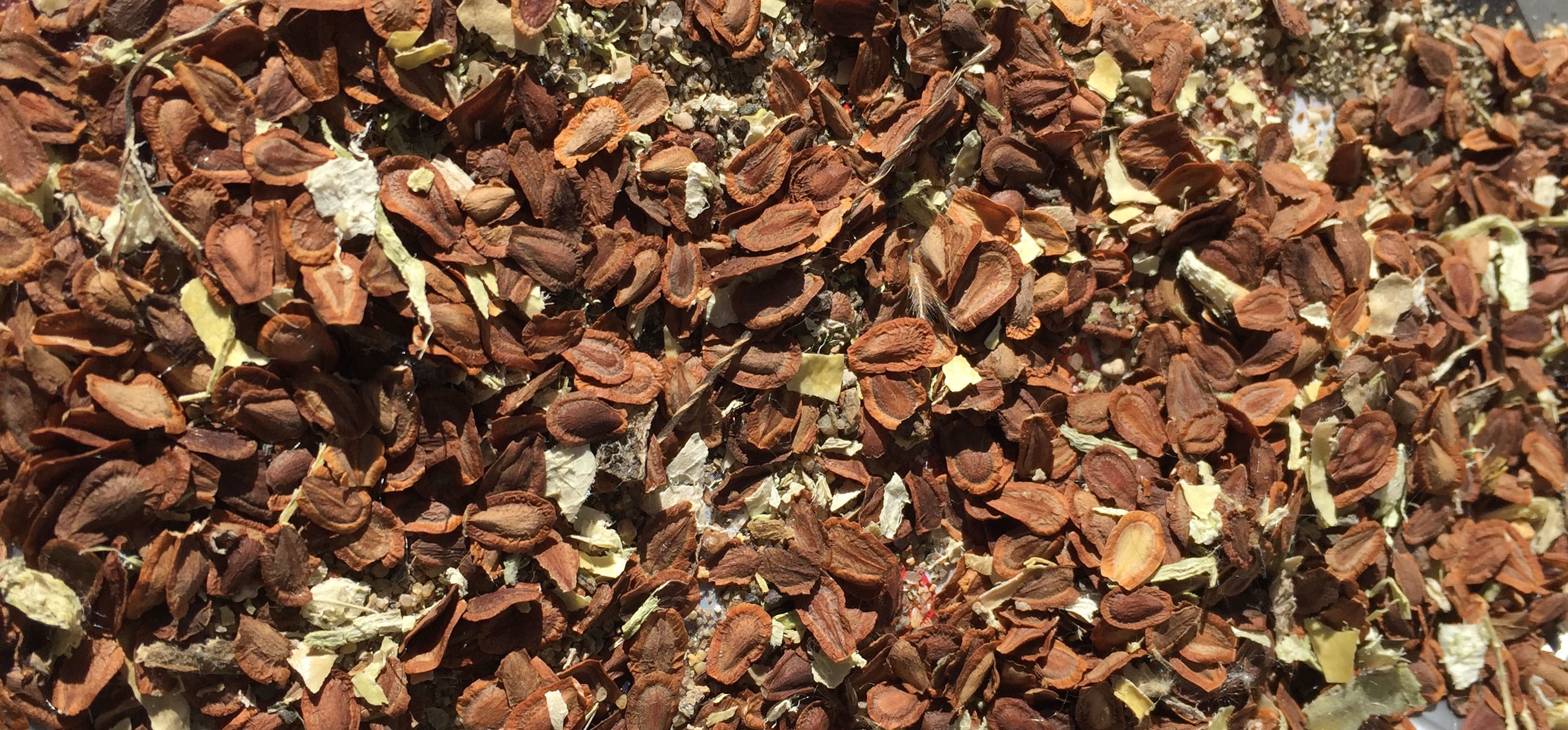 Milkweed seeds galore!
Milkweed seeds galore!
On average, the Madison Wetland Management District hand harvests and processes approximately 100 pounds of milkweed seed annually, which they disperse in the District and distribute to private landowners.
Madison, Lake Andes and Rainwater Basin Wetland Management District in Nebraska also harvest native seed from other flowers and grasses, which they distribute to partners and use on their land to increase plant diversity. The Rainwater Basin Wetland Management District uses a combine to collect native seeds which they share with local non-governmental agencies, national wildlife refuges, Ducks Unlimited and Nebraska Game and Parks Commission.
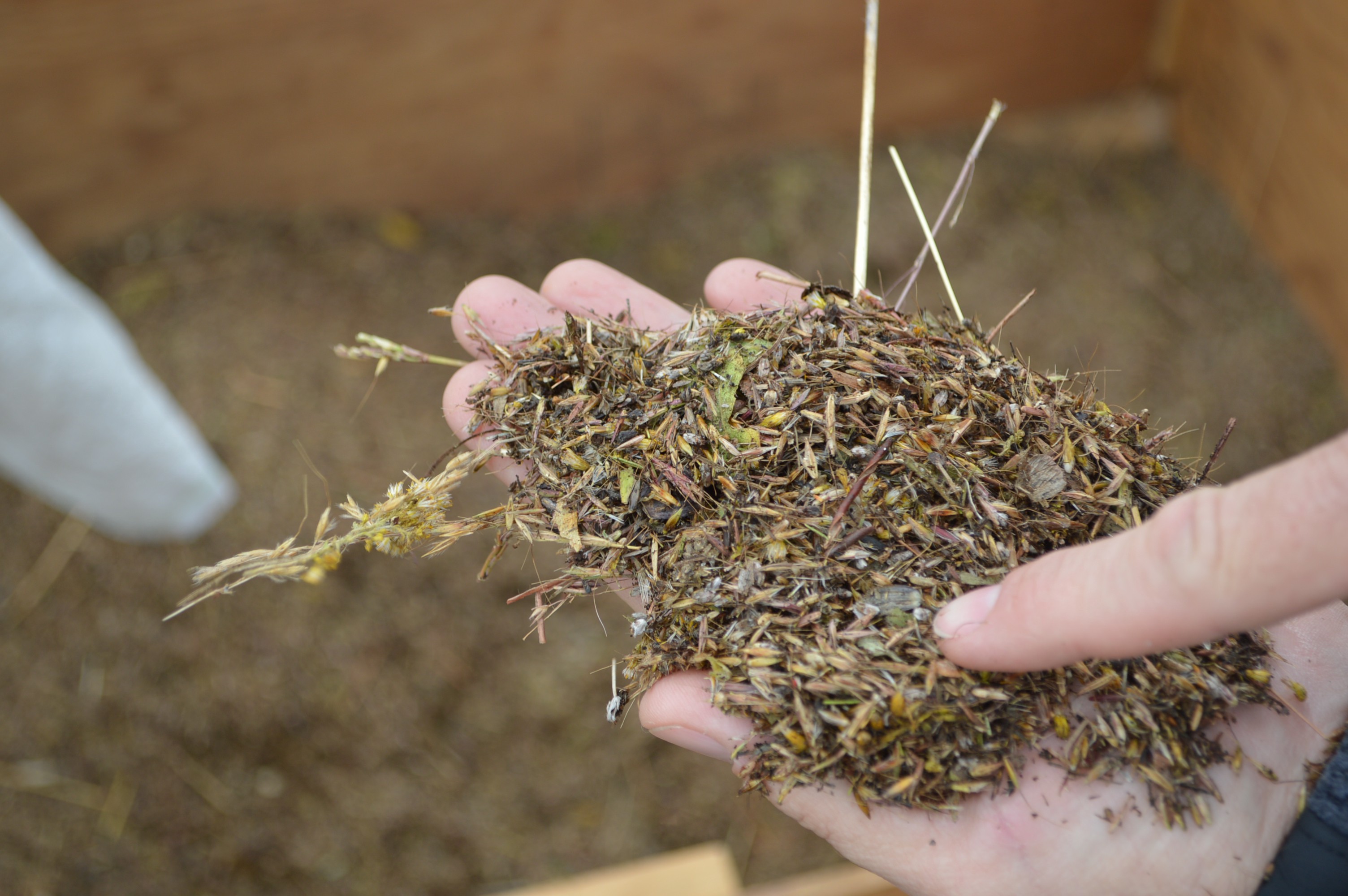 Diversity of native grass and flower seeds at Rainwater Basin WMD. Photo: Kate Miyamoto, USFWS
Diversity of native grass and flower seeds at Rainwater Basin WMD. Photo: Kate Miyamoto, USFWS
YOU CAN HELP!
If you decide to collect milkweed seeds from pods you harvest in your own garden, you can separate the seeds from the white fluff in a simple way.
Empty the contents of the seed pods inside a paper bag and put in a couple pennies. Close the bag and shake. The pennies will help separate the seeds.
Plant the seeds, watch the milkweed grow, and wait for monarch butterflies to arrive!
Here are some resources.
Build a Butterfly and Pollinator Garden in 7 Steps
Milkweed Seed Finder
Pollinator-Friendly Plant Lists by Region
Find Native Plants in Your Area
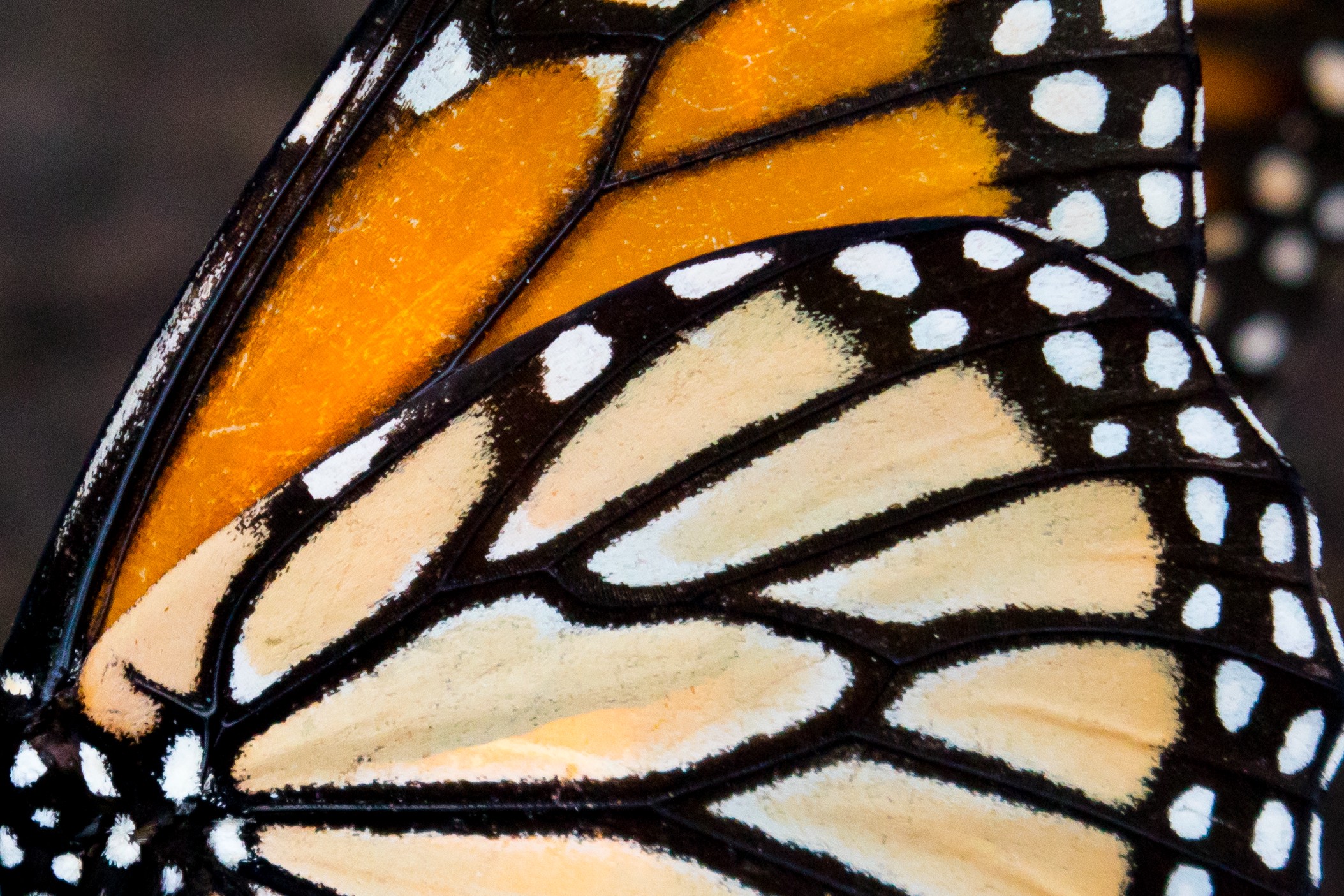 Monarch butterfly wing / Lisa Hupp
Monarch butterfly wing / Lisa Hupp
Article by Kate Miyamoto, U.S. Fish and Wildlife Service, Lakewood, Colorado
